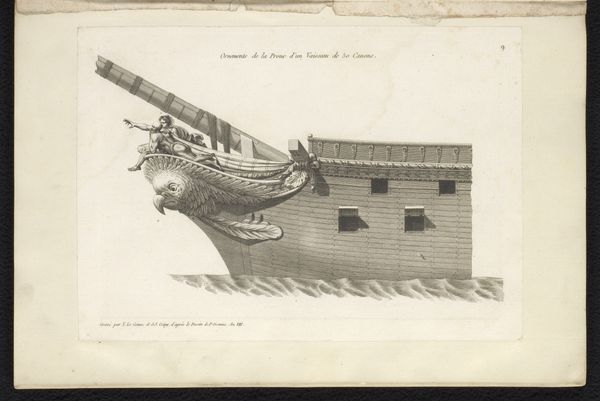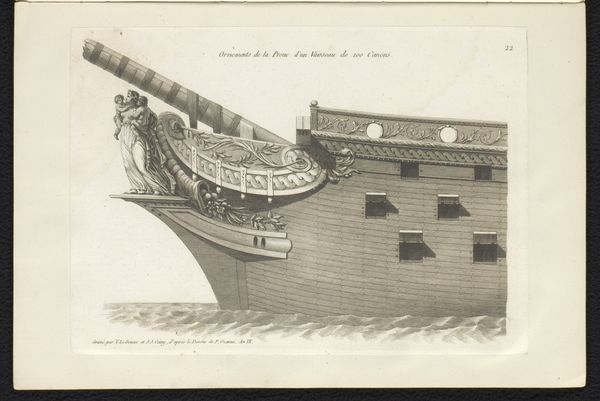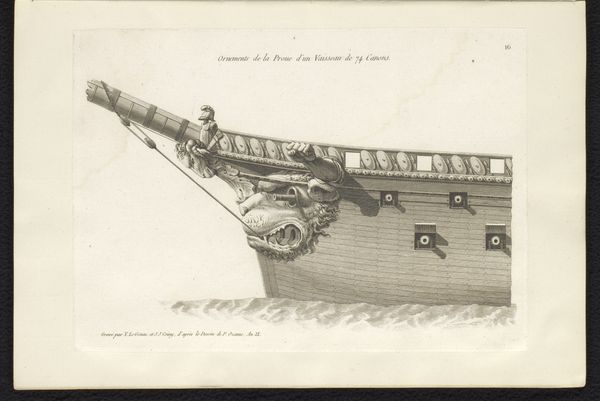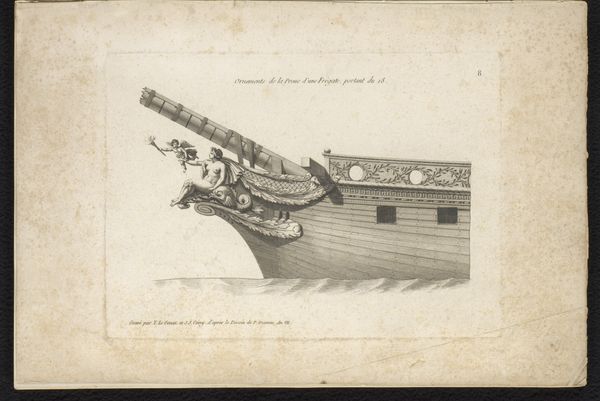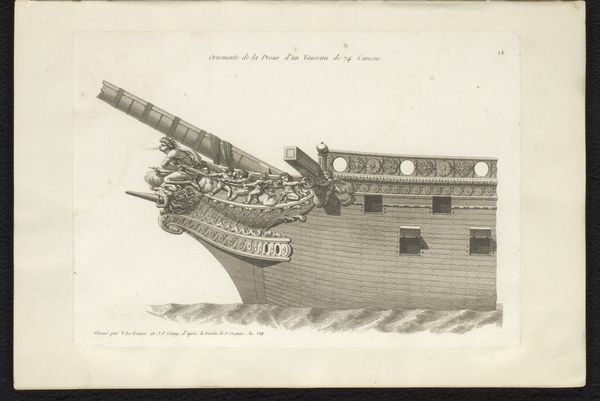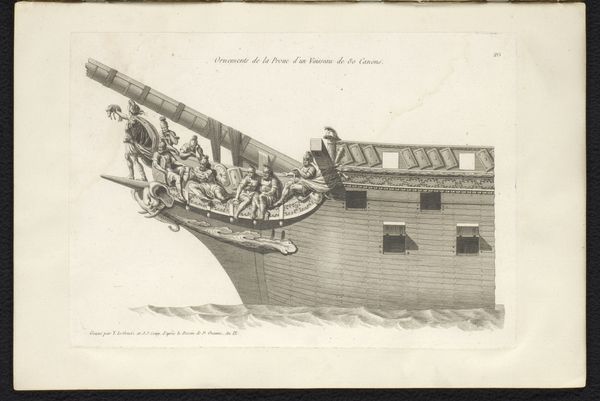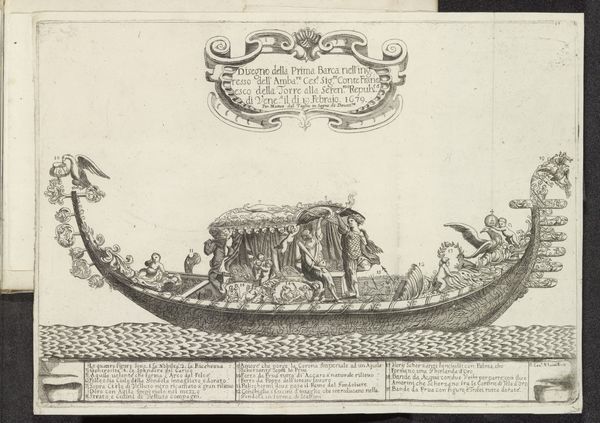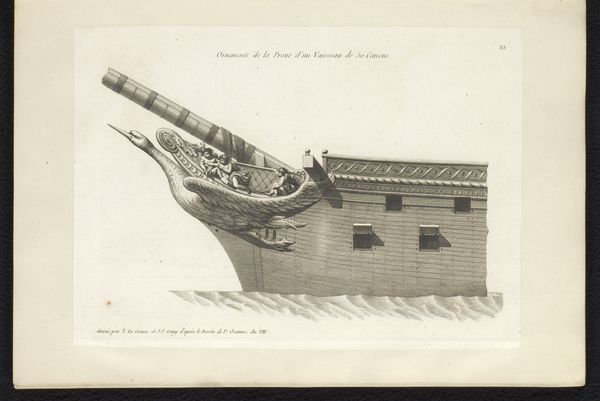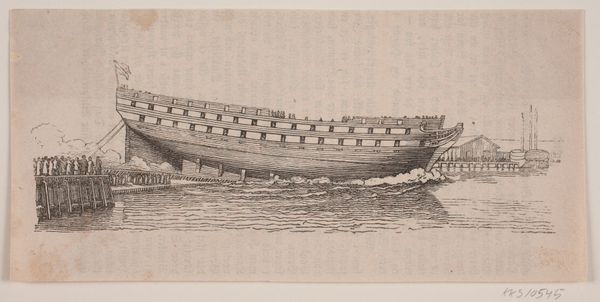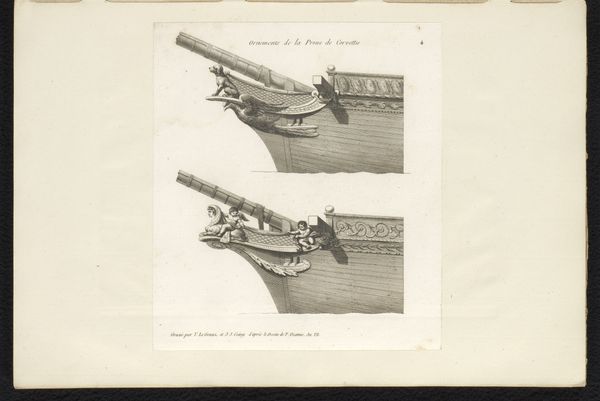
print, engraving
#
neoclacissism
# print
#
engraving
Dimensions: height 225 mm, width 317 mm
Copyright: Rijks Museum: Open Domain
Editor: This engraving by Joseph Coiny, titled "Figurehead and prow of a sailing ship," dates from around 1800. I’m immediately struck by the ornate detail—the contrast between the delicate figurehead and the solid, imposing structure of the ship itself is really interesting. How do you interpret this work in terms of its historical and social context? Curator: This print offers a window into the socio-political landscape of its time, particularly concerning naval power and national identity. Note the prominent display of wealth and power. What does it tell us about 19th-century Europe's aspirations of dominance and its relationship to the sea? Think about the period's reliance on maritime trade and military strength. Editor: So, the elaborate figurehead and the ship itself weren't just decorative; they were statements of national and economic power? Almost like a floating billboard? Curator: Precisely! The artistry employed would also have suggested an implicit connection to colonial ambitions. The very act of adorning a warship with such a classical, almost mythological, scene naturalizes its imperial endeavors. Who gets to tell these stories, and whose narratives are being overlooked or actively suppressed in these pronouncements of power? Editor: It’s fascinating to consider that something seemingly decorative can carry such heavy ideological weight. It's forced me to rethink how I see not just art, but objects in general. Curator: It reveals how deeply intertwined art, power, and identity truly are. This print serves as a potent reminder that art is never neutral; it’s always implicated in the social and political realities of its time. Now I wonder: What could that cannon symbolize today, and what is lost as the culture of power shifts with time?
Comments
No comments
Be the first to comment and join the conversation on the ultimate creative platform.
